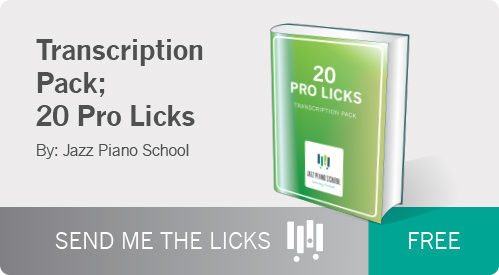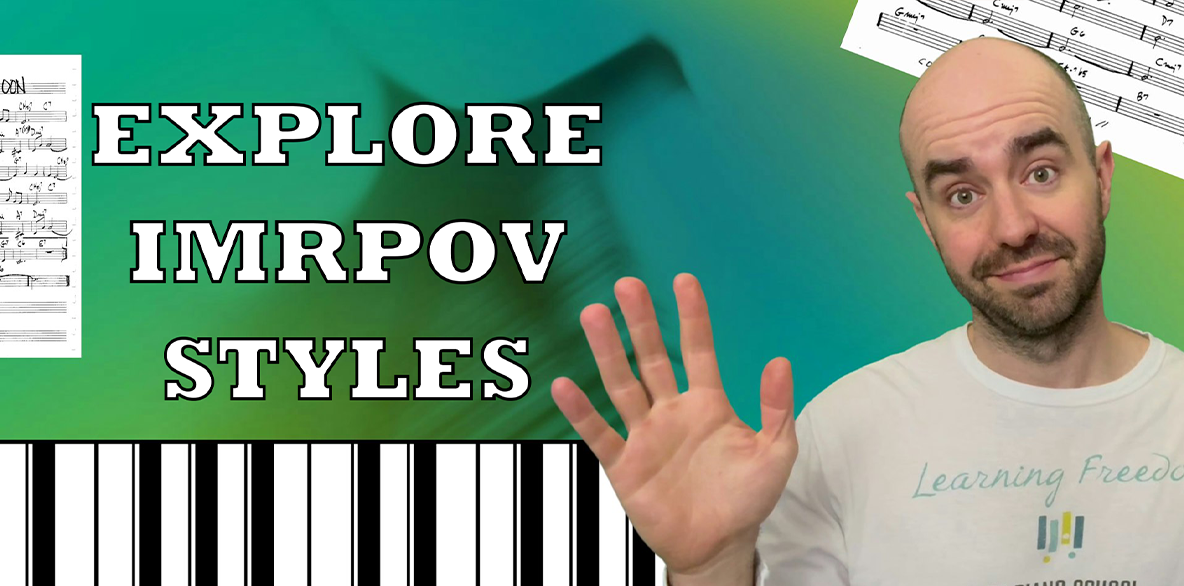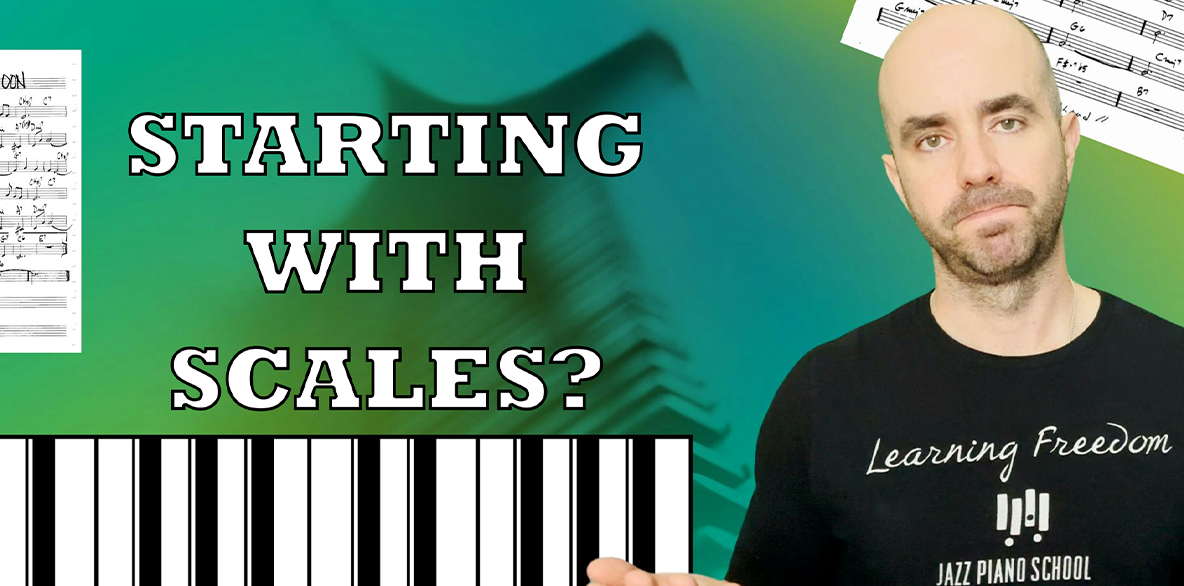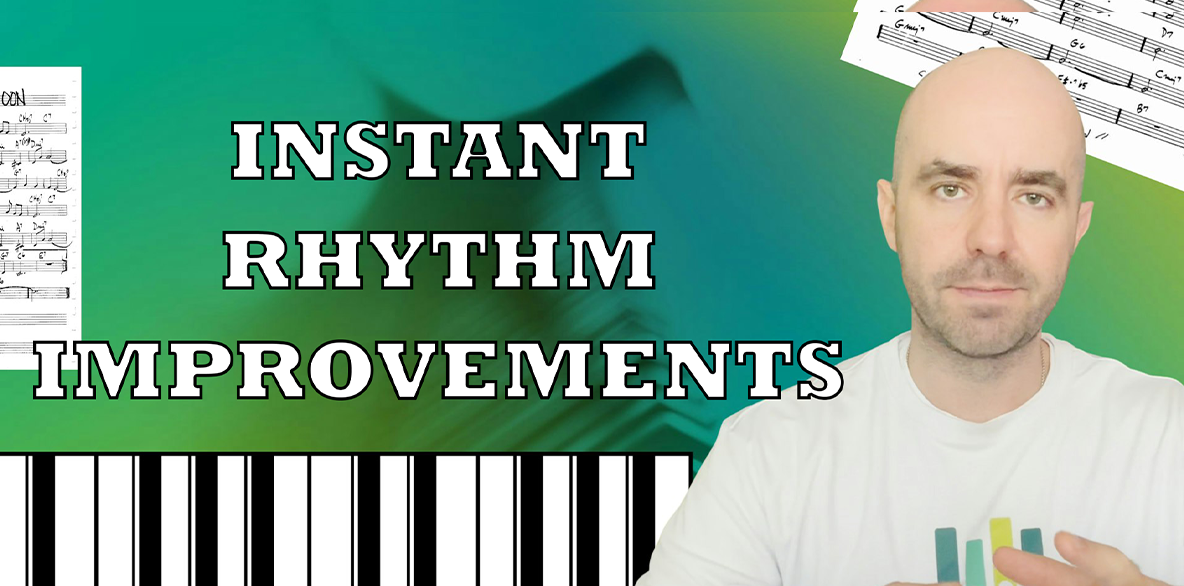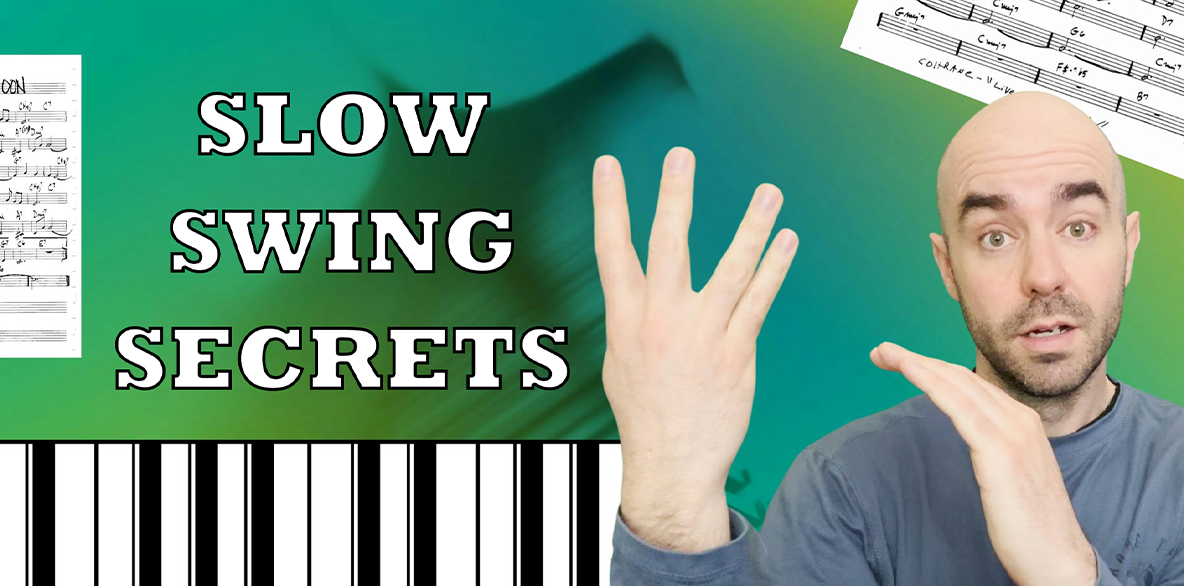
What are shell voicings?
Shell voicings are LH (left hand) voicings for piano which form the foundation for any third-based harmonic accompaniment. They can be found in the repertoire of great pianists such as Bud Powell, Sonny Clarke, and Phineas Newborn, to name a few.
Where do they come from?
These voicings define the harmony of a chord, and are built from primarily roots, 3rd, and 7th. They can be comprised of two notes (Example A) and three notes (Example B) in various ranges and inversions.

How can shell voicings help you?
Solo jazz piano can be daunting. As pianists, we have great power, yet great responsibility. With the ability to play up to ten notes at any given time, the question is which notes to play(!?) In solo playing, we cover the bass, melody, and harmony all in one. With only two hands, some part of this has to serve more than one function. What shell voicings allows us to do is use the left hand to cover both the bass the harmony simultaneously, allowing the right hand the freedom to play any melody it may desire. This means while using shell voicings, you can present the melody of a tune, and continue to use them while soloing. Many great pianists use this approach, as can be heard on Bud Powell’s iconic album, “The Amazing Bud Powell.”
Where to Start?
It is first important to be familiar with the 3rds and 7ths of each chord, which form the harmonic framework. In Exercise 1, we will look at the tune “Just Friends.” Here we have the LH covering a single bass note, while the RH plays the 3rds and 7ths. Note the good voice leading (moving by < minor 3rd) in each voice. This will come in handy when making your shell voicings.

Bring it All Together!
With a familiarity of the harmonic information on a tune, you can use this knowledge to construct shell voicings. Below is an example on “Just Friends.” It begins with Root, 3rd, 7th, alternating between 2 and 3 note voicings. Through the second half of the etude, the voicings expand to a lower range and larger intervals. This can be effective to achieve a richer sound on the piano. These voicings can serve to accompany the melody of the tune, and you can also experiment with using them for your improvisation. Experiment with different rhythms and durations. Happy shelling!





